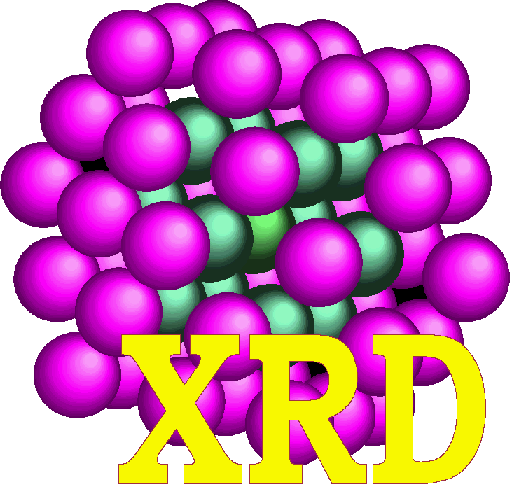Research
PhD Thesis of Maciej Zieliński brilliantly defended on Sept. 25th 2019
Structure dynamics of heterogeneous catalysts based on nanocrystalline gold in oxidation-reduction (REDOX) reactions.
by Maciej Zieliński, MSc. Eng.
Supervisor:
Zbigniew Kaszkur, PhD., DSc., Assoc. Prof. IPC PAS
The main scope of this research was to study the dynamic structure changes of the surface of heterogeneous catalysts containing supported nanocrystalline gold as their active component. Two model reactions were selected: stoichiometric oxidation of carbon monoxide (CO) by the molecular oxygen (O2) (abbrev. sCOOX) and preferential oxidation of CO in the presence of H2 (abbrev. PROX). Gold catalysts themselves are promising materials e.g. in the fuel cell industry for purification of hydrogen stream from CO, which contaminates the components of cells and decreases their efficiency.
The primary experimental technique used was the in-operando Nanocrystalline X-Ray Diffraction (NXRD) which was based on Powder X-Ray Diffraction (PXRD) coupled with Mass Spectrometry (MS) and a customised measurement strategy was applied. Furthermore, the in-operando Transmission Electron Microscopy (TEM) was also employed as a complementary technique. In this way, the research was focused specifically on investigation of crystal structures evolution under working conditions of the catalysts. Both experimental approaches were the world’s newest methods able to address the question of the role of the heterogeneous catalyst surface in the chemical reaction mechanism.
Catalysts facilitate chemical reactions to run under milder conditions or favour desired products if competing ones can be formed. It is the surface of the heterogenous solid catalyst that takes part in the reaction with gaseous reagents, so the gas molecules need first to adsorb on this surface. The assumed hypothesis suggested that the interaction with adsorbents results in immediate perturbation of the initially relaxed structure of the surface. PXRD and TEM are particularly suitable for detection of even little changes of the crystal lattice. The surface needs to adapt to the new electronic and energetic circumstances in order to dissipate the emerging energy excess. After the final products have been formed, these products desorb and the catalyst surface recovers its pristine configuration. The whole path is cyclically repeated, but the catalyst does not deteriorate in time.
In the case of nanocrystals, the surface constitutes a large fraction of the whole particle structure. Consequently, any change occurring at the surface affects the bulk part of the particle as well. Hence, tracking of the surface structure evolution was equally possible at the atomic level and through the averaged phenomena of X-Ray and electron diffraction.
Three catalysts containing gold nanoparticles (AuNPs) deposited on different supports: cerium (IV) oxide (ceria, 9.4%wt. Au/CeO2), silica (7.16%wt. Au/SiO2) and carbon (20% wt. Au/C), were selected as the objects of interest for this research. The most remarkable results were obtained for ceria decorated with AuNPs. It was the most efficient catalyst reaching over 80% conversion of CO to CO2 with high selectivity against water (H2O) production (in PROX reaction). It was concluded that ceria provided its extended surface for adsorption of CO and storage of activated oxygen moieties. AuNPs, or their perimeter at the interphase with ceria, were crucial for the CO2 production as pure CeO2 remained inactive under the same reaction conditions. Moreover, gold facilitated adsorption of reductive molecules (e.g. hydrogen, H2) on ceria and, thus, induced the redistribution of oxygen vacancies inside the ceria nanocrystals. Bare CeO2 was unaffected by the hydrogen atmosphere at ~150°C, while in the presence of gold the structure of ceria slightly expanded. It corresponded to the appearance of higher number of Ce3+ ions in the CeO 2-x particle core.
The Au/SiO2 and Au/C catalysts were observed to be much less active in the sCOOX and PROX reactions. The reactivity of the silica-supported one strongly depended on the content of water vapour in the gas atmosphere. The comparison of the metal-support interactions (MSI) between the reducible semiconducting CeO2 and non-reducible insulating SiO2 inspired conclusions on the reaction mechanism. The Au/C catalyst served as the reference of the catalytic activity of the bare gold nanocrystals.
The electron microscopy studies strongly implied that, although the imaging conditions were carefully chosen and did not influence the chemical activity results, the electron beam altered the irradiated sample electronic structure – additional part of Ce4+ ions in ceria were most probably reduced temporarily to Ce3+. This phenomenon has to be considered in detail in the future.
The Thesis is available at http://rcin.org.pl/dlibra/docmetadata?id=81875 or from Z.Kaszkur webpage kaszkur.net.pl .



